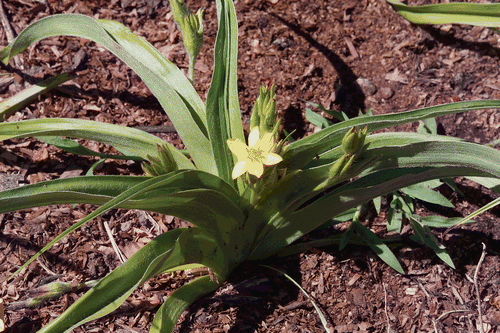© Thomas Brendler

Botanical name: Hypoxis hemerocallidea Fisch. & C.A. Mey., Hypoxidaceae
Synonyms: Hypoxis rooperi L.
Vernacular names: Hypoxis, star flower, “African potato” (English); inkomfe (Zulu)
Geographical distribution: Southern Africa.
Description: The plant is a stemless, geophytic, perennial herb with large black fibrous tubers. The leaves are long, broad, strap-shaped, slightly hairy, and typically arranged to form three distinct groups spreading outwards from the centre of the plant. The flowers are bright yellow and star-shaped.
Chemical constituents: The main compounds in the corms are phytosterols, the main phenolic compound is a norlignane 4,4′-diglucoside known as hypoxoside – its aglycone is known as rooperol.
Pharmacology: Phytosterols and phytosterol glycosides are of some use in the treatment of hypercholesterolemia and prostate hyperplasia. Hypoxis or its sitosterols is considered to have immune-modulating properties. Rooperol is antimutagenic, anti-inflammatory and cytotoxic to cancer cells.
Medicinal uses: Hypoxis corms or extracts are used as general tonics in African Traditional Medicine, the juice is applied to burns. The stems and leaves are mixed with other ingredients to treat prostate problems and urinary infections.
